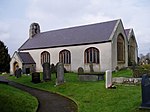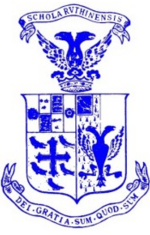Moel y Gaer, Llanbedr
Archaeological sites in DenbighshireHillforts in Denbighshire

Moel y Gaer (Welsh for "bald hill of the fortress"), also known as Moel-y-Gaer Camp or Moel y Gaer Hillfort, is an Iron Age hillfort located on a western spur of the Clwydian Range, near the village of Llanbedr, Denbighshire, Wales. The site is a scheduled monument, classified as a prehistoric defensive hillfort.The hillfort is one of a chain of six hillforts in the Clwydian Range, which are, from north to south, Moel Hiraddug, Moel y Gaer Bodfari, Penycloddiau, Moel Arthur, Moel y Gaer Llanbedr, and Moel Fenlli.
Excerpt from the Wikipedia article Moel y Gaer, Llanbedr (License: CC BY-SA 3.0, Authors, Images).Moel y Gaer, Llanbedr
Geographical coordinates (GPS) Address External links Nearby Places Show on map
Geographical coordinates (GPS)
| Latitude | Longitude |
|---|---|
| N 53.1461 ° | E -3.2744 ° |
Address
Moel y Gaer Hillfort
LL15 1TA , Llanbedr Dyffryn Clwyd
Wales, United Kingdom
Open on Google Maps









